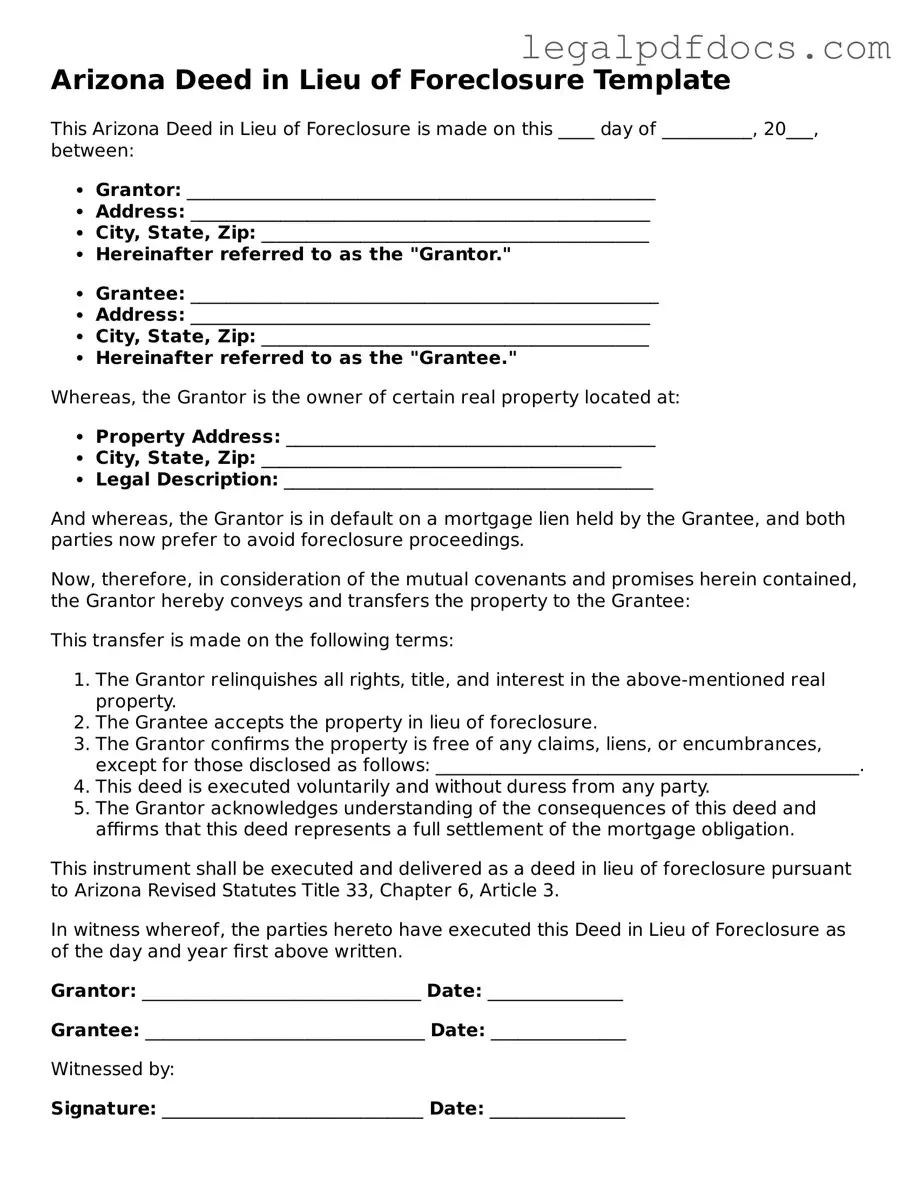In the realm of real estate, homeowners facing financial hardship may find themselves exploring alternatives to foreclosure. One such option is the Arizona Deed in Lieu of Foreclosure form, which serves as a legal instrument allowing a homeowner to voluntarily transfer their property back to the lender. This process can often provide a more amicable solution for both parties involved, potentially mitigating the emotional and financial toll of foreclosure. By executing this form, the homeowner relinquishes ownership of the property, while the lender agrees to cancel the mortgage debt. This arrangement can lead to a quicker resolution than traditional foreclosure proceedings, allowing the homeowner to move forward with their life. Additionally, the Deed in Lieu of Foreclosure may help protect the homeowner's credit score compared to a foreclosure, although it is essential to understand that it still may have some negative impact. In Arizona, specific requirements and implications accompany this form, making it crucial for homeowners to be informed and prepared as they navigate this challenging situation.
